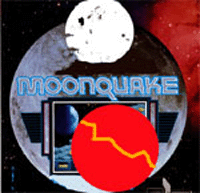Quakes, Solar Activity, Moon Phase Related--Study
2004 12 06
 A freelance researcher has suggested that there could be a correlation between seismic tremors and heightened solar activity coinciding with a full moon or new moon. A freelance researcher has suggested that there could be a correlation between seismic tremors and heightened solar activity coinciding with a full moon or new moon.
Rajagopal Kamath, an LIC official based at Kollam, has gone on to "predict'' a moderate earthquake in the Kerala region during the next two months during full moon or new moon as a severe geomagnetic storm is in progress.
Mr. Kamath says he has been observing the changes in the sun's activity and its impact on seismic activity in the South Indian region for the last four years. He has found what he calls a surprising "link'' between solar activity and earthquakes.
The most recent case was that of the November 8 tremor experienced in Kannur. The tremor, which measured 3.2 on the Richter scale, occurred on a full moon day in the wake of a severe geomagnetic storm that began on October 30.
Mr. Kamath also points to the quake of 4.7 magnitude on December 12, 2000, in the Idukki-Kottayam area and the devastating quake of January 26, 2001, in Gujarat. These quakes also occurred during a full moon and a new moon timed with the solar maxima or intense solar activity as part of a 11-year cycle.
``A solar flare has not always been followed by a quake, but a quake was always preceded by a flare, that too during the solar maxima. The sun is now very active and a quake cannot be ruled out,'' says Mr. Kamath.
The solar flares result in coronal mass ejections that send large amounts of charged particles towards the earth.
These particles interrupt satellite communications and cause severe geomagnetic storms.
The solar flare of August 25, 2001, coincided with a quake in Thrissur district on that day. The flare on September 24, 2001, preceded the Gujarat quake by about 72 hours.
Mr. Kamath says that though quantitative proof is lacking to support his theory, seismologists can conduct a study regarding a possible correlation.
``All that I can say is that there is a chance for a tremor in an area where seismic pressure is on the rise when a solar flare is on and the full moon is approaching,'' he says.
Seismologists, however, point out that more data is needed on solar flares and tremors at a global level to prove or disprove such a correlation.
Says Kushala Rajendran of the Centre for Earth Science Studies here, "one should be able to relate it to not only micro-tremors, but also large earthquakes recorded all over the world.''
Mr. Kamath was in the news last year when he questioned the Archaeology Department's claim regarding the antiquity of a sailing vessel, which was discovered at Thaikkal near Cherthala.
He had pointed out certain technical flaws in the dating and subsequent studies had proved that the ship was not as old as was claimed.
Article From: http://www.earthchangestv.com/secure/2004/article_5602.php

|
